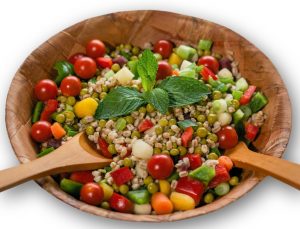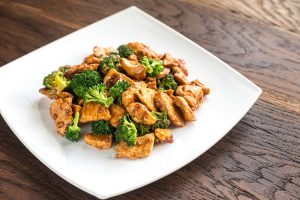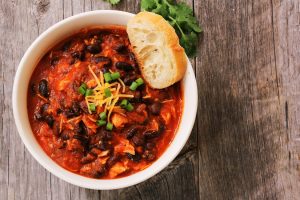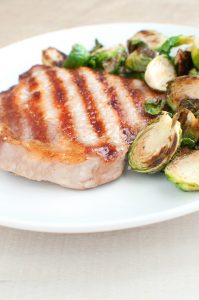Prep/Total Time: 25 min.
Makes: 12 servings (3/4 cup each)
Ingredients:
- 1 can (14-1/2 ounces) reduced-sodium chicken broth
- 1-1/2 cups uncooked whole wheat orzo pasta
- 4 cups fresh baby spinach
- 2 cups grape tomatoes, halved
- 2 cans (15 ounces each) chickpeas or garbanzo beans, rinsed and drained
- 3/4 cup chopped fresh parsley
- 2 green onions, chopped
DRESSING:
- 1/4 cup olive oil
- 3 tablespoons lemon juice
- 3/4 teaspoon salt
- 1/4 teaspoon garlic powder
- 1/4 teaspoon hot pepper sauce
- 1/4 teaspoon pepper
Directions:
- In a large saucepan, bring broth to a boil. Stir in orzo; return to a boil. Reduce heat; simmer, covered, until al dente, 8-10 minutes.
- In a large bowl, toss spinach and warm orzo, allowing spinach to wilt slightly. Add tomatoes, chickpeas, parsley and green onions.
- Whisk together dressing ingredients. Toss with salad.
Nutrition Facts:
Serving size: 3/4 cup
122 calories
5g fat, 259mg sodium, 16g carbohydrate (1g sugars, 4g fiber), 4g protein
Original recipe from Taste of Home can be found here!






